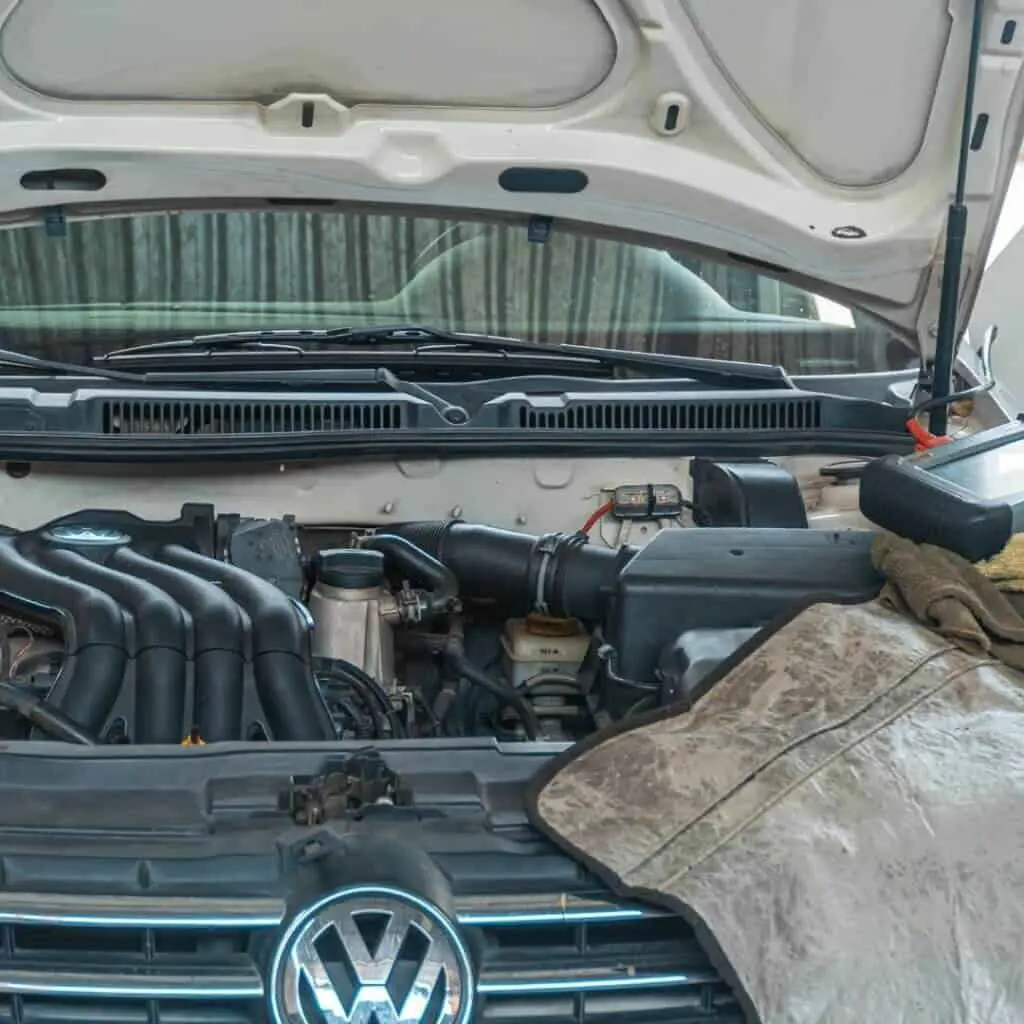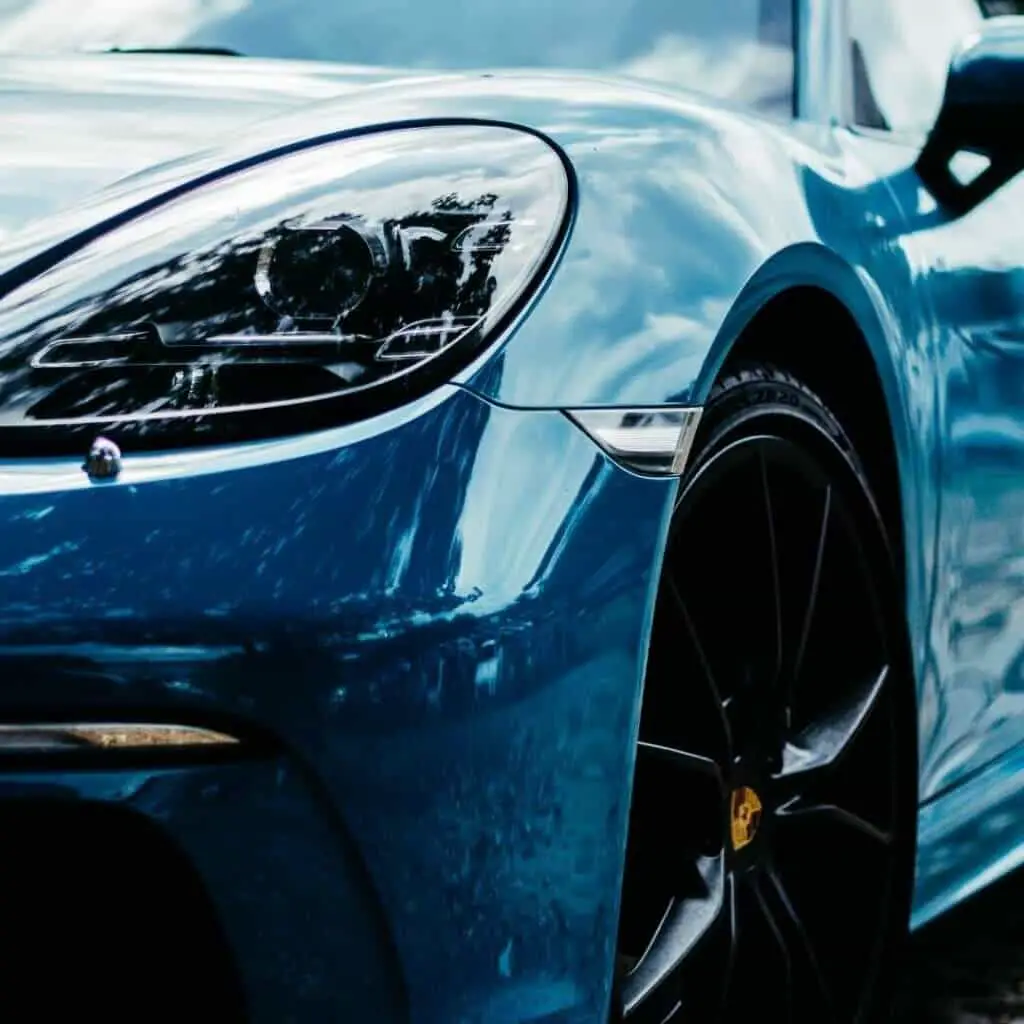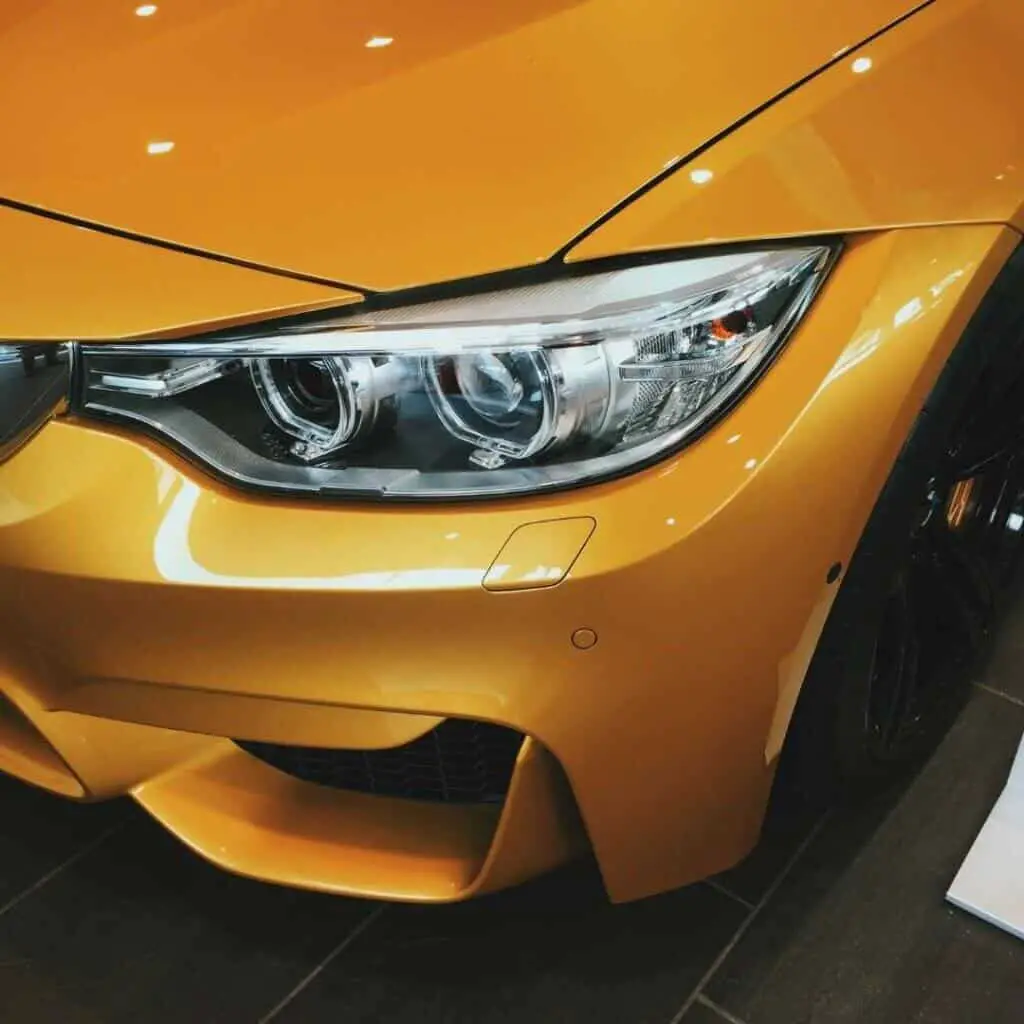Are you familiar with the VW Eos problems?
The Volkswagen Eos was produced between 2006 and 2015 as the first vehicle in the world with a five-piece coupé, sliding, and convertible top (CSC roof). It takes the CSC roof only 25 seconds to open and close.
The front part can be opened or elevated like a typical sliding or lifting sunroof and has the appearance of clear glass. The outcome is a bright interior ambiance even with the roof closed. The Eos provides a greater convertible experience than many of its rivals when the roof is open.
The car has a relatively short windscreen frame because of the broad roof span. This gives the driver and passenger greater room and a better view of the sky above. The vehicle underwent a redesign at the start of 2011.
A 2.0-liter turbocharged four-cylinder engine with 200 horsepower and 207 pound-feet of torque powers the front-wheel-drive 2016 Volkswagen Eos. A six-speed automated manual transmission offers the comfort of a standard automatic transmission while providing drivers who prefer manual-shift control the option.
The car’s combined fuel efficiency is 25 mpg. The Eos reaches 60 mph from 0 in 7.3 seconds [1]. November 2015 marked the conclusion of Eos production.
The VW Eos is ranked among the best cars to be produced. However, just like any other vehicle, the car came with its share of problems.
According to CarComplaints, VW Eos engine problems are the overall worst problem category. Owners of VW Eos typically complain about issues with the convertible roof failing. Transmission issues with the car are also frequently observed. [2]
Most Common VW Eos Problems
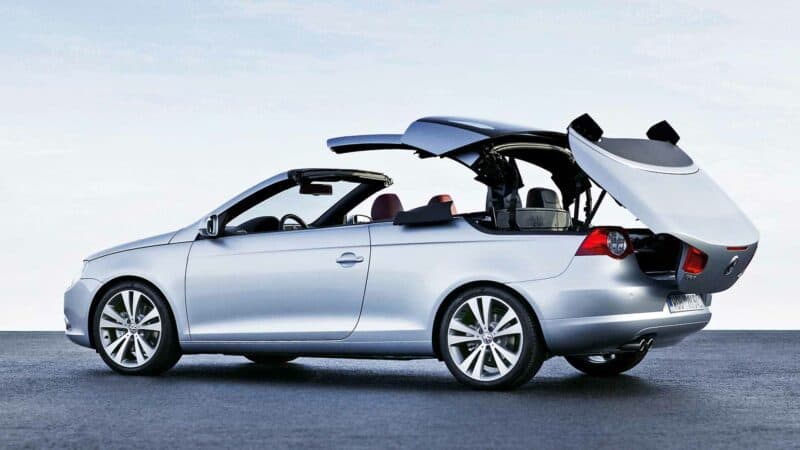
- Convertible Roof Failure
The motorized roof of the Volkswagen Eos convertible retracts automatically. Owners describe a variety of problems with the convertible roof, the most frequent of which is the inability to retract the roof at all. The most impacted Eos convertibles by this problem are those from the 2007 and 2008 model years.
A malfunctioning roof motor is the primary cause of roof issues with the Volkswagen EOS convertible. The roof of the car is opened and closed by a motor. If the motor fails, the roof will not operate.
In addition, several owners complain that the Eos’ roof leaks when it rains, while other drivers have had the roof become stuck midway through the retraction process. The VW Eos is vulnerable to water entry due to its design.
Water can harm the roof’s mechanical and electrical components once it enters the car through joints, cracks, or worn-out seals.
Most often, leaks are caused by deformed rubber seals and clogged tubes. As the rubber seals become loose or degrade, water can penetrate the car’s pillars and frame.[4]
The tube may get fully blocked as a result of an accumulation of dust, debris, dirt, and bird droppings over time. The outside rubber seals deteriorate due to exposure to the sun, salty water, and other seasonal elements. They deform and gently contract, allowing water to pass through.
Fixing VW Eos Convertible roof problems
Issues with the VW Eos convertible roof can be fixed in the following ways:
- Clean all the rubber seals with Krytox, then use an air compressor to blow out the crud in the A-pillar drain tube (as instructed in the Volkswagen manual).
- Look in the fuse box for the fuse connecting the top. Change it if it has blown up.
- Check for any bent arms or broken wires, which occasionally may be the issue.
Turn to your local VW service shop for interior repairs if the issue is more serious. The average cost of repair for issues with the intricate retraction system is projected to be around $2,700. The cost of a new roof could go up to $20,000, depending on the location and condition of the car [5].
- Clock Spring Issues
Volkswagen cars have experienced clock spring problems for a while. The issue was the subject of a recall by the manufacturer to fix it. In August 2015, VW recalled several vehicles, including the Eos, although the firm acknowledged they didn’t know how to remedy the issue [6].
Long after having their clock springs fixed as part of VW’s recall, owners still experienced issues with their steering wheel buttons, airbags, and horn. Following the recall, at least 154 complaints about clock springs were submitted to NHTSA.
Volkswagen identified the cause as hair, specifically long hair or fibers that could taint the steering wheel clock spring. A clock spring is a coil of flat wires wrapped around the steering wheel component.
When the steering wheel is turned left and right, the spring allows the airbag, horn, and steering wheel buttons to remain connected. If long hair or other fibers get inside the clock spring, it may cause the guiding loops to move around inside the spring. [7]
A flat cable may rip due to stress created by misaligned guide loops. The driver’s side airbag may fail to deploy as a result of an electrical connection issue brought on by a ripped wire.
The steering wheel and the vehicle’s computers can no longer communicate if the clock spring breaks. The airbag, horn, and button features like radio controls and cruise control situated on the steering wheel will all be rendered inoperable by a defective clock spring.
Solving clock spring issues
Consider getting the broken clock spring mended as soon as possible because driving without a working driver airbag is risky. If you own an Eos model from 2010 to 2013, you can check to see if it has been repaired under warranty.
If not, VW should do so as the problem was subject to a recall. If you intend to buy a secondhand Eos, ensure that you obtain maintenance documents to determine whether this has been done.
It is best to replace the clock spring instead of working on the coils because doing so could further deteriorate the primary steering areas. This might damage the electronic parts of the automobile that are connected to them. Clock spring replacement typically costs between $500 and $900, including labor fees.
- Excessive Oil Consumption
The Eos turbocharged engines have been reportedly using too much engine oil. Many of the cars only had 40,000 to 75,000 miles on them when the complaints were made.
Poor quality oil, ineffective valve stem seals, worn piston rings, high oil pressure, and an old engine all contribute to high or rising oil consumption [8].
The following practices can help you to keep track of the oil consumption of your Eos;
- Regularly top off the engine oil to prevent engine damage. If the issue worsens, blue smoke at high revs will be visible. In this situation, you’ll have to spend about $250 to replace the valve seals.
- The oil neck’s cover will have carbon buildup that can be seen. The crankcase ventilation system in this situation needs to be cleaned, which should cost between $80 and $100, with negotiable labor expenses.
- If your original powertrain warranty is still in effect, ask your mechanic to check for leaks or to perform an oil consumption test.
- Keep precise records and make sure you are aware of how much oil your engine requires at each oil change. Save your receipts as proof that you followed the recommended schedule for oil changes.
- Find out if there are any technical service bulletins, customer satisfaction campaigns, or recalls that apply to your car.
- Timing Chain Issues
Timing chain problems have been observed by VW Eos owners as early as 20,000 miles on the odometer. Numerous owners were confronted with problems of poor filter and oil performance. Dirty oil doesn’t lubricate as well, and the timing chain may wear out too quickly.
If the owner couldn’t provide flawless oil maintenance records with receipts, they were barred from receiving timing chain warranty cover. Future timing chain and tensioner repairs and replacements are automatically covered under an extended warranty for owners and lessees of the concerned cars, including the Eos [9].
Your car’s engine functions with the help of a timing chain. The chain connects the crankshaft and camshaft with several guides and tensioners. It is in charge of synchronizing the pistons and valves in the combustion chamber.
There will be significant issues if the timing chain becomes slack, either from strain or from a broken tensioner. If a loose timing chain is not fixed right away, it could break and seriously harm the engine.
Failure of the timing chain tensioner is the most plausible cause. The chain is twisted securely around the pulleys and gears thanks to tensioners.
Engine misfiring while driving, engine rattling at startup or idling, glowing Check Engine light, and metal shavings in the oil are some warning signs of a timing chain issue.
The cost of labor for fixing timing chain issues is from $400 to $1,000 on average, while the cost of parts is $200 to $600. The overall price could range from $600 to $1,600. Pricing at your local dealer could be higher than at a nearby repair business.
These expenses will only pay for the replacement of the timing chain, they will not cover any harm an engine might sustain from a broken timing chain. It is best to tow the car to the closest Volkswagen service facility unless you are an expert in timing chain replacement.
- Transmission Issues
Owners of VW Eos convertibles with manual transmissions have experienced issues with the transmission. The Eos frequently experiences transmission issues, such as difficulty shifting into certain gears and premature clutch failure. Also, certain Eos convertibles have had issues with their engines, including engine coil failures.
A DSG gearbox transmission failure was reported by an owner at 88,000 miles. The transmission jerked between shifts after driving the car in traffic, and it made a loud “clunk” sound when shifting.
Many problems, ranging from slow acceleration to total transmission failure, might be brought on by a malfunctioning transmission. Low transmission fluid levels may be the cause of VW transmission issues like erratic shifting, limp mode, no shifting, and no reverse [10].
Several indications, including broken valve bodies, blocked transmission filters, bad solenoids, faulty VW mechatronic units, and problematic torque converters, might also point to a significant issue.
Related: VW Amarok Problems
How to fix VW Eos transmission issues
It’s crucial to remember that some of the symptoms could also be brought on by different issues, such as a failing clutch or a problem with the drive axles. Thus, it is always advised to take your car to a skilled VW repairer who can identify and resolve the problem.
Many transmission issues are fixable with relatively simple modifications or in-car fixes. The majority of basic repairs don’t necessitate removing the transmission from the car. If you have trouble shifting properly with a computer-controlled transmission, it’s typically because the computer sent the transmission the wrong signals.
This could be due to a malfunctioning sensor, or it could be that the transmission is not responding to the command because of a faulty connection or solenoid pack. Resolving a transmission that is too early or too late in manual vehicles will usually involve an adjustment to the throttle cable. [11]
A comprehensive overhaul might be necessary for serious transmission issues. The entire transmission must be removed and disassembled for a thorough overhaul.
Related: VW T-Cross Problems
Best and worst year for VW Eos
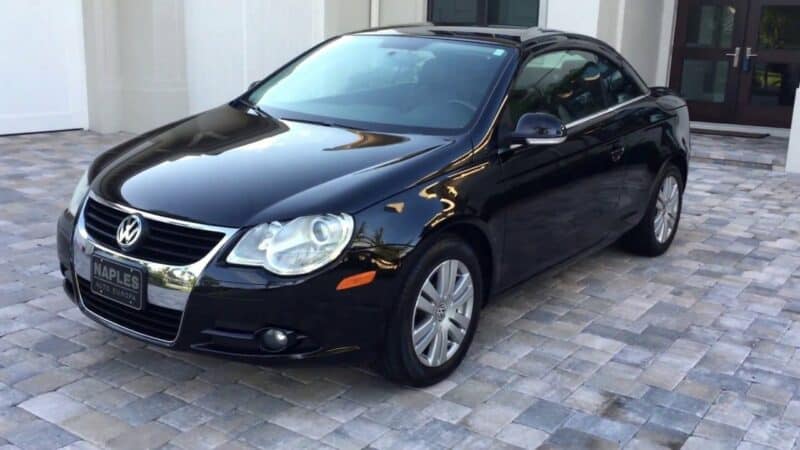
The 2008 VW Eos has had the most general complaints. 2008 is considered to be the worst VW Eos model year overall based on several criteria, including repair costs and average mileage when issues arise.
The 2008 Volkswagen Eos convertible top malfunction is the most frequently reported issue. The 2006 model appears to be the best year for VW Eos since it has no registered complaints. [12]
Related: VW T-Roc Problems
Final Word
The car’s complicated five-piece folding top has frequently developed mechanical issues. Additionally, the model has been associated with transmission problems, excessive oil consumption,timing chain and clock spring issues. These are some of the most common VW Eos problems.
Volkswagen responded to these issues by issuing recalls and providing extended warranties to the affected vehicles.
The Volkswagen Eos is generally reliable. It is rated 16th out of 28 VW vehicles for reliability. The approximate $824 in annual maintenance costs are more than the $651 average for other automobiles.
Although the concerns stated above may seem like an endless list, if the Eos is adequately taken care of, the vehicle has been known last over 150,000 miles.
Read Next: Cadillac XT4 Problems

